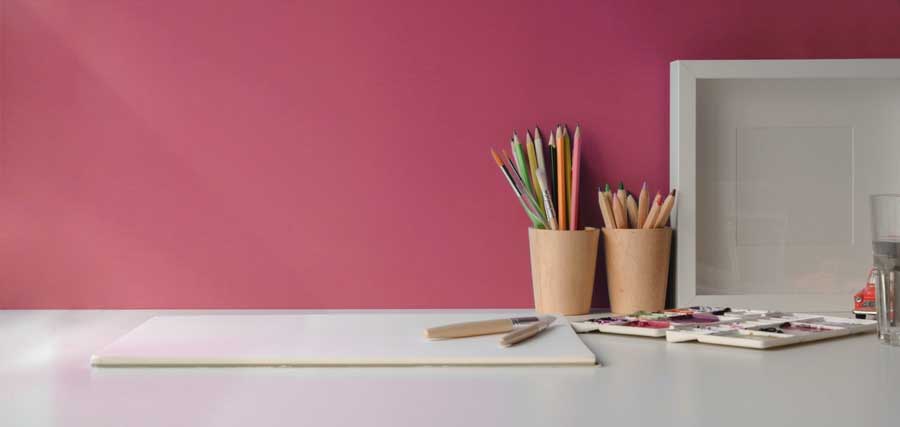Room color psychology
Room color psychology. Color plays an integral role in creating a particular aurora and feeling within your interior space. This is what is known as color psychology, which is how color affects your thoughts, actions, and emotions. Certain colors are associated with specific emotions and feelings by using this information; you can create the perfect look for your personal space. Some examples are: red evokes the passion, yellow evokes happiness, and green reflects nature.
Psychology relates to the analysis and study of the human mind to see how our thoughts and feelings impact our daily decisions. One sensory variable that we come in contact with every day has an enormous impact on individual psychology, and in certain instances, you have total control over it. The variable in question is color; color is everything that we look from when we step outside, eat food, or even take a bath.
One place where color dominates our senses is our home, your home is your personal space, so it should consist of things that make you feel comfortable and safe. The color of your rooms can significantly impact your mental health and overall sense of well-being, whether you realize it or not. That’s why it’s so important to paint your rooms a color that makes you feel happy and joyous when you see it.
To take a more in-depth look at how room color affects psychology, continue reading to find a complete breakdown of the relationship between color and your mind.
How room color affects your mental health
Specific colors are associated with certain emotions and feelings, by understanding the relationship between these various colors and emotions you’ll be able to create a space that bolsters positive thinking and a healthy lifestyle.
Keep in mind, while colors are associated with very rigid ideas of what emotions, thoughts, or feelings they commonly evoke, this is strictly on an individual basis. One color may affect you in a different way than it affects someone else.
Virtually every color you can think of is associated with a specific emotion or feeling. By educating yourself about the various associates between different colors and thoughts, you will be able to create an interior space that is your ideal oasis.
Here are some of the most common colors and their psychological association:
- Yellow – Yellow is commonly associated with happiness, sunlight, inspiration, and optimism. If you’re trying to enhance the overall mood of a space, yellow is an excellent color.
- Blue – Blue is a color that is commonly associated with friendship, loyalty, and compassion. If you want to give your space a welcoming feeling, blue is a great choice.
- Purple – purple is associated with royalty, wealth, and luxury. If you want to give your space a plush and exotic feel, purple is your color.
- Red – red is often associated with energy, confidence, and excitement, which is why it’s commonly used in clubs and other social environments. If you want to give your space a passionate feel, red is the way to go.
- Pink – pink is associated with romance, innocence, and feminity, which makes it perfect for a female’s room or places where you want to bring fun and enjoyment.
- Green – green arouses feelings of relaxation and calm, it also represents nature, which makes it the perfect color or those who want a natural-looking space.
These are some of the most common colors and their psychological associations. Depending on what emotions and feelings you’re trying to evoke in your space, any of these colors can help you bolster a specific atmosphere and environment that is reflective of your design ideas.
The importance of choosing the right room color
Colors go hand in hand with interior design, as it’s one of the primary elements in any room. Choosing the wrong color for your interior space can lead to mental health problems, clarity of thought, motivation, and more. Not to mention the fact that the wrong color accented against furniture and other elements in your clash can lead to a clash of style that doesn’t work.
Use inspirations from your personal life, such as any of your favorite colors or design themes, to help make a decision about which color is right for you.
People Also Ask
Q: What room colors affect your mood?
A: Some of the most popular colors that are known to affect your mood include: soothing green, energetic red, grounding black, and uplifting yellow.
Q: What is the most depressing color?
A: There is more than one color known to evoke feelings of depression; they are as follows: black, gray, orange-brown, and beige.
Q: What is color psychology in interior design?
A: Color psychology is a theory that proposes that states, through the strategic implementation of specific colors and designs in interior design, you can impact how someone acts and thinks. For example, someone who is going for a more comfortable and warm feel in their home may choose darker hues instead of lighter ones and vice versa.
Conclusion
We’ve gone over all of the essential facts and information that you need to know as it relates to color psychology. Ask yourself, “what colors make me happy?” and ” what feeling do I want to give my space?” before deciding on the color you will use in your interior element. As long as you follow all of the tips in this write-up, you’ll be able to pick the right color for your home in no time.
For further analysis, please see this great article room color psychology
More information on interior painting






